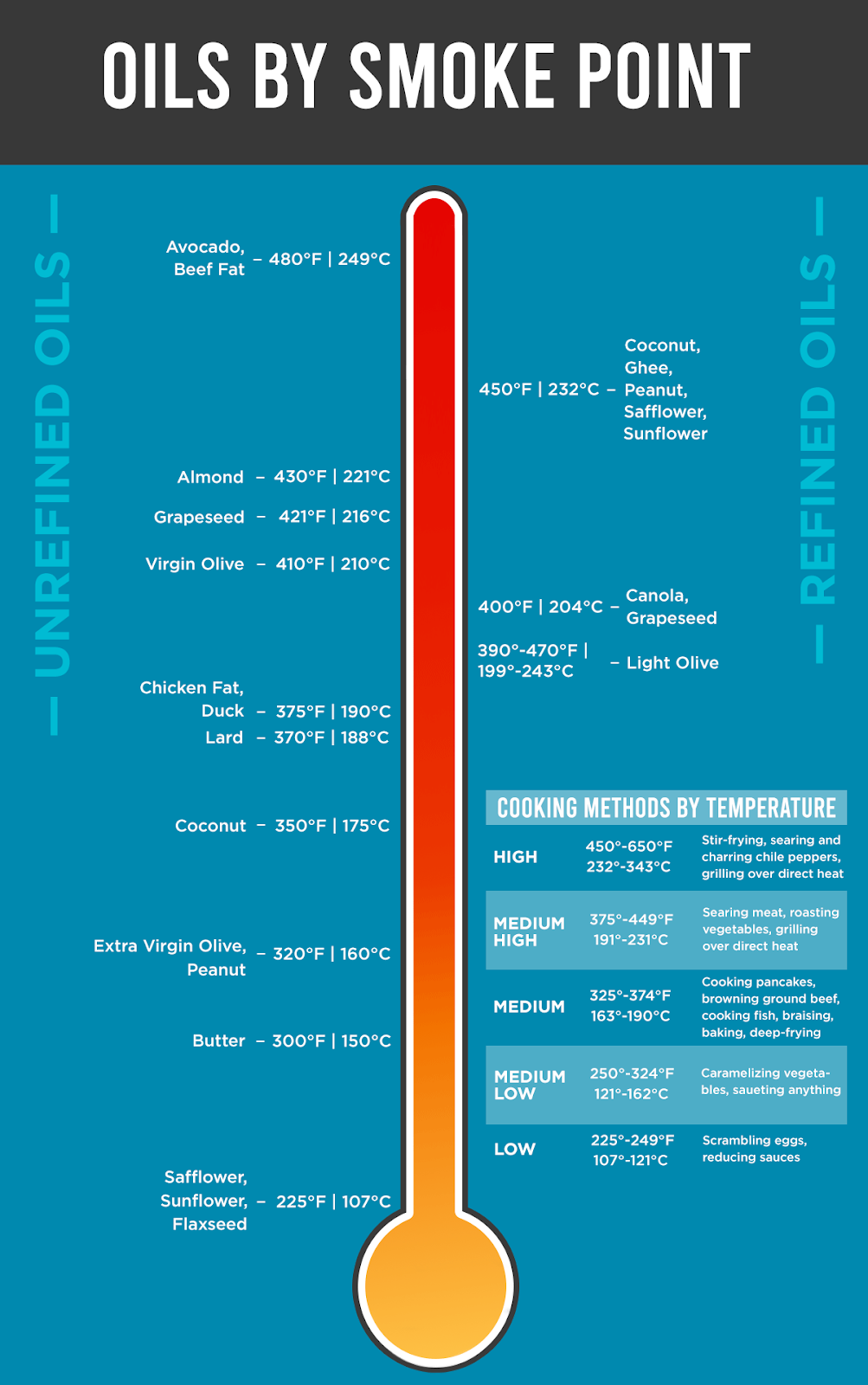Selecting the right cooking oil can significantly impact the flavour, nutritional content, and overall health of your dishes. One crucial factor to consider is the smoke point, the temperature at which an oil starts to smoke and break down. Let’s take a look at understanding how to choose a cooking oil, the health considerations, smoke points, and the diverse types available.
Understanding the significance of smoke points
The smoke point of an oil marks the threshold between shimmering and smoking. While occasional smoke during high-heat cooking methods like stir-frying is acceptable, consistent smoking indicates oil breakdown. This breakdown releases undesirable chemicals that can impart a burnt or bitter flavour to your food, along with harmful free radicals that can affect your health. It’s vital to match the oil’s smoke point with your intended cooking method to prevent these issues.
A guide to cooking oil smoke points
Refer to the chart below by Canola Info.org for a general overview of common cooking oils and their respective smoke points. Keep in mind that smoke points can vary among manufacturers, with more refined oils generally boasting higher smoke points.

Choosing the right cooking oil
When trying to navigate which cooking oil is best for your everyday cooking in the kitchen, it’s essential to consider more than just smoke points. Here are three key characteristics to consider before reaching for that bottle on your next grocery run.
Flavour profile: Oils can impart distinct flavours to your dishes. While some recipes benefit from a particular oil’s flavour, others require neutral options to avoid muddling the overall taste. Experiment with flavourful oils like sesame, walnut, or virgin coconut for salads, and opt for neutral oils like peanut, vegetable, canola, safflower, or corn oil for frying, thanks to their higher smoke points.
Refinement level: Oils can be either unrefined or refined. Unrefined oils retain natural flavours, minerals, nutrients, and enzymes but have lower smoke points. Refined oils, processed to remove volatile compounds, offer a neutral taste, longer shelf life, and higher smoke points. Choose based on your intended use and flavour preferences.
Fatty acid composition: Consider the balance between Omega-3 and Omega-6 fatty acids. Oils rich in Omega-3, like flaxseed and extra virgin olive oil, offer health benefits, while those high in Omega-6 can cause inflammation. Use Omega-6-rich oils, such as almond oil, in moderation.
Saturated vs. Unsaturated fats: Opt for oils with higher unsaturated fat content, found in nuts and seeds, for a healthier choice. Liquid oils at room temperature generally contain more unsaturated fats compared to saturated fats found in butter or lard, which should be consumed sparingly.
ALSO SEE: 7 extra virgin olive myths busted
Feature image: Unsplash

